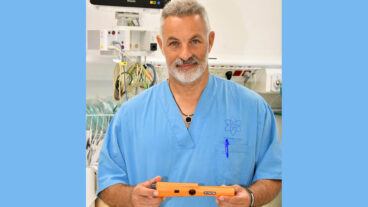‘Our study shows that once exposed to cigarette smoke, saliva undergoes an affect which turns it from Dr. Jekyll into Mr. Hyde.’ – Dr Rafi NaglerA study conducted by Israeli scientists shows that smoking tobacco destroys protective molecules in saliva and transforms it into a dangerous cocktail of chemicals that increases the risk of mouth cancer.
Normally, saliva provides a protective buffer between toxins and the lining of the mouth because it contains important enzymes that fight and neutralize harmful substances. In addition, our salivary glands, which are located under the tongue and near the lower jaw, begin producing saliva, contain a digestive enzyme called amylase, which is found in saliva, starts to break down some of the carbohydrates (starches and sugars) in the food even before it leaves the mouth.
But the new research by a team from the Technion-Israel Institute of Technology in Haifa that’s been published in the British Journal of Cancer, shows that the chemicals in tobacco smoke combine with saliva with devastating effect. They destroy the protective components of saliva – leaving a corrosive mix that damages cells in the mouth and can eventually turn them cancerous.
“In essence, our study shows that once exposed to cigarette smoke, saliva undergoes an affect which turns it from Dr. Jekyll into Mr. Hyde. Instead of protecting the body, it becomes the enemy,” Dr Rafi Nagler, a co-leader of the project, told ISRAEL21c.
“Our normally healthy saliva not only loses its beneficial qualities but it turns traitor and actually aids in destroying the cells of the mouth and oral cavity. Cigarette smoke is not only damaging on its own, it can turn the body against itself,” he added.
Nagler, who also practices in the Dept. of Maxillofacial Surgery at Rambam Hospital in Haifa, has been studying saliva since working on his PHD in the early 1990s at the National Institute of Health in Washington, DC.
“I focused on finding an answer to a question first posed in 1911 when radiation began to be used on cancer patients. Why was it that when radiation was administered to the head or neck region were the salivatory glands killed in a short time? This is why people who went through such radiation suffered from dry mouth for the rest of their lives.”
Nagler discovered that exposure of the major salivary glands to ionizing radiation often results in severe alterations in structure and function of the salivatory glands. When he returned to Israel in 1992 and began teaching at the Technion, he continued researching the subject in collaboration with Professor Abraham Resnick.
“In my research with Professor Reznik, we decided to examine the relationship between smoke and saliva. We know that most cased of oral cancer are due to cigarette smoke, and – in the case of cultures like Southeast Asia – from chewing tobacco. Both the cigarette smoke and chewing tobacco are focused the region of the oral cavity and the pharynx, and we realized the common denominator was saliva. We asked ‘what’s the relationship when smoke meets saliva?’ “
Smoking and drinking are the leading causes of head and neck or oral cancer – called Oropharyngeal (OP) cancer – which includes cancer of the lip, mouth, tongue, gums, larynx and pharynx. Nearly 400,000 new cases of the illness are diagnosed worldwide each year with the majority in developing countries. The five-year survival rates are less than 50 percent. According to Nagler, OP cancer is the most common head and neck malignancy and accounts for 2-4% of all new cancers. It is primarily induced by exposure to tobacco.
Nagler and Reznick’s study recreated the effects of cigarette smoke on cancerous cells of the mouth. Half of the cell samples were exposed to cigarette smoke and the other half to the saliva and cigarette smoke mixture. Cancerous cells were used in order to quickly assess whether the saliva and smoke mixture would speed the cancer’s development. The study revealed that the longer the mouth cells were exposed to the contaminated saliva, the more the cells were damaged. The smoke also destroyed various salivary components, including protective ones such as peroxidase, the most important salivary antioxidant enzyme
According to Nagler, this negative synergy synergy is based on the reaction between redox active metals in saliva and low reactive free radicals in cigarette smoke, which results in the production of highly active hydroxyl free radicals.
“Hydroxyl radicals are the most dangerous and lethal. They attack biological molecules in a tenth of a second,” said Nadler.
Nagler and his colleagues believe the research could open up new avenues to develop better treatments to prevent oral cancer.
“Most people will find it very shocking that the mixture of saliva and smoke is actually more lethal to cells in the mouth than cigarette smoke alone,” he said
Jean King, Director of Tobacco Control for Cancer Research UK, which owns the British Journal of Cancer, says, “This insight into how mouth cancer can develop offers more reasons for smokers to try and quit. People know of the link with lung cancer, and this research adds compelling evidence about the damage smoking can do to the mouth.”












